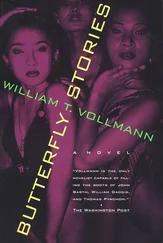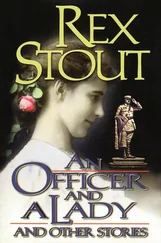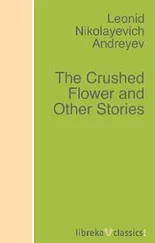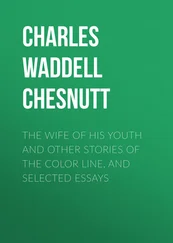The shrub called hueloxóchitl —Lieut. R.W.H. Hardy, R.N., Travels in the Interior of Mexico, in 1825, 1826, 1827, and 1828 (London: Henry Colburn and Richard Bentley, 1829), p. 533. I have Mexicanized the orthography of Hardy’s huelosóchil.
“engordar el cochino”— Christoph Rosenmüller, Patrons, Partisans and Palace Intrigues: The Court Society of Colonial Mexico, 1702–1710 (Calgary, Alberta: University of Calgary Press, 2008), p. 45. This may be an anachronism, since the phrase was current in 1710, but then again perhaps it was in use a half-century earlier; therefore, dear reader, please let me off the hook.
Punishment of concubinage— Weckmann, p. 455.
“Sad is my heart, negrita…”— Frenk et al, p. 5 (2773a, “El Siquisirí,” trans. by Teresa McFarland and WTV).
Former name for San Juan de Ulúa: Chalchiuhcuecan— Francisco López de Gómara, Cortés: The Life of the Conqueror by His Secretary, trans. and ed. Lesley Byrd Simpson from 1552 ed. (Berkeley: University of California, 1964), p. 54.
THE WHITE-ARMED LADY
Epigraph: “For the white-armed lady…”— Snorri Sturluson [attributed; but the true compiler’s identity is uncertain], The Poetic Edda, trans. Lee M. Hollander, 2nd. ed., rev. (Austin: University of Texas Press, 1962; orig. texts 9th–14th cent.), p. 161 (stanza 7; slightly “retranslated” by WTV).
WHERE YOUR TREASURE IS
Kvitsøy is an island about twenty kilometers northwest of Stavanger.
“Better is the end of a thing than its beginning.” — Ecclesiastes 7:8.
“To what shall I compare the kingdom of God?…” — Luke 13:20–21.
The flower called guldå — Galeopsis speciosa Leppeblomstfam.
“I never knew you…” —Matthew 7:23
A valurt -flower — Symphytum officinale Rubladfam.
Rogaland is the district containing Stavanger.
“Do not lay up for yourselves treasures…” — Matthew 6:19, 21.
“Somehow Astrid helped her make up the money — in secret of course.”— The following verse might apply to Astrid’s pre- and postmortem doings: “But when you give alms, do not let your left hand know what your right hand is doing, so that your alms may be in secret; and your Father who sees in secret will reward you.”— Matthew 6:3–4.
Bishop Eriksøn— Jørgen Eriksøn, the Bishop of Stavanger in 1571–1604, proved that the Lutherans were as firm against witchcraft as the Catholics. In 1584 Stavanger was the proud originator of the witchcraft law whose provisions eventually put to death about three hundred people in Norway, and we can give the Bishop some of the credit. The victims got hanged, burned or decapitated. In a portrait, the Bishop’s immense red moustache bends down over his mouth like the eaves of an old turf house, and his dark little eyes are sad and watchful in his pink moon-face.
“Blessed are those who are persecuted” and “blessed are the meek” — Matthew 5:10, 5:5.
THE MEMORY STONE
Epigraph: “Most people say that the bride was rather gloomy…”—Diana Whaley, ed., Sagas of Warrior-Poets (New York: Penguin Books, p. 136, “The Saga of Gunnlaug Serpent-tongue,” trans. Katrina Atwood). In the epigraph I have emended “Serpent-tongue” to “Serpent-Tongue.”
The rock with the footprints and ship-carvings actually does lie in the center of Stavanger, and anyone who wishes can stand on it.
The description of the landscape near Valhalla is derived from notes I took around Lillehammer in 2006. I am especially grateful to John Erik Riley for a beautiful driving trip toward Jötunheim.
THE NARROW PASSAGE
Epigraph: “… if foul witch dwell…” — Hollander, p. 239 (stanza 28; slightly “retranslated” by WTV).
As mentioned in the source-notes to “Where Your Treasure Is,” Rogaland is the district containing Stavanger.
According to this city’s Sjøfartsmuseum, Stavanger was one of the main embarkation ports for American-bound emigrants from 1825 to 1870. And here my celestial captain requires me to insert an endorsement for Den Norske Amerikalinje, eneste norske passagerlinje til New-York. This ship made seven hundred and seventy transoceanic voyages, the last one being in 1963.
The discussion of emigration in my story (including the tale of the Amelia ) relies considerably on information in Egil Harald Grude’s pamphlet From Vågen to America: The Migrant Exodus 1825–1930, trans. Susan Tyrrel (Stavanger: Dept. Maritime Museum in cooperation with Stavanger Vesta Insurance Co., printed by Rostrup Grafiske A.S., September 1986). According to Eli N. Aga and Hans Eyvind Næss, From Runes to Rigs: Cultural History Treasures of the Stavanger Region, trans. Rolf E. Gooderham (Stavanger?: Kulturkonsult, 2001), the herring arrived suddenly in 1808 (p. 88); then (p. 94) “the influx of herring became more and more unreliable after 1850, and the fishery came to an end in the 1870s.”
Some of my descriptions of Stavanger and the herring factories at this period are derived from illustrations (and, occasionally, text) in Susan Tyrell, Once Upon a Town (Stavanger: Dreyer Bok, 1979), pp. 26, 32–37, 75. Nowadays Stavanger is blessed with night-water twitching with reflected window-lights, and rain clouds hang nearly blue over the great oil ships, whose bridges glow more brightly than anything, while faraway ivory-yellow windows call across the black water.
Saint Mary’s and Haakon’s church— These are at Asvaldsnes (a visit for which I thank Mr. Eirik Bø), and here I first heard of that Doomsday legend.
Hjelmeland and Suldal are two contiguous districts to the northeast of Stavanger, which, as I have said, lies in Rogaland. Hjelmeland is closer.
Reverend Johansen’s Bible passage: “Carry me, O LORD…” — Of course this is not a Bible passage at all, but a stanza from the Eddic poem “Skírnismál,” which I have clothed in a pseudo-Christian disguise. The original reads: “Thy steed then lend me to lift me o’er weird / ring of flickering flame, / the sword also that swings itself, / if wise he who wields it” (Hollander, p. 67).
Description of the “petroglyphs of long ships”— After a photograph in Frá haug ok heithni: Tidsskrift for Rogalands Arkeologiske Forening (Stavanger), nr. 1, 2007, p. 17.
“For the gate is narrow…” — Matthew 7:14.
“Glasir stands gold-leaved before Sigtyr’s halls.” — Snorri Sturluson, Edda, trans. Anthony Faulkes (London: J. M. Dent & Sons / Everyman, 1992 repr. of 1987 ed.), p. 96 (my “retranslation” of a line quoted in isolation from Skaldskaparmal ). The title may be unclear, so let me note that this book is not in the Elder or Poetic Edda, which I cite as “Hollander,” but the Younger or Prose Edda, written ca. 1220–30. “Sygtyr” is one of Odin’s many names.
The maneuvers of King Rörek— Olaf Sagas, pp. 196–97.
“If you, Kristina, and you, Øistein, do not yet hate each other…”—Cf. Luke 14:26.
Description of the pond behind the Domkirke— Frá haug ok heithni, nr. 1, 2004, p. 7 (Bodil Wolf Johnsen, Byparken — En Historisk Oversikt, landscape painting from 1852).
THE QUEEN’S GRAVE
Epigraph: “But how is that future diminished…”— Saint Augustine, Confessions, trans. E. B. Pusey, D.D. (London: Dent/Everyman’s Library, 1962; orig. Latin text bef. 430 A.D.), p. 274.
Description of the queen’s grave and its environs— After a visit in 2011 (thanks to the lovely Marit Egaas) to Hå Old Rectory, Nærbo, a seaside cemetery of sixty-odd Bronze Age mounds; and to Tinghaud and Krosshaug (near Klepp) where there is in fact an ancient queen’s grave.
Читать дальше












